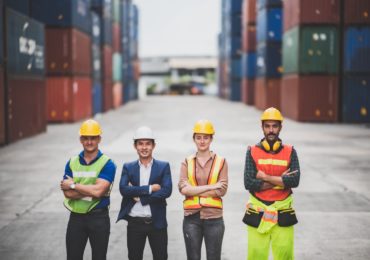Read Time: 4 min.
The global supply chain experienced more disruption—and not the good kind—in the past year than ever before in history. However, despite the rapid-fire changes and unpredictability of just about every aspect of logistics, we’ve emerged stronger and more resilient as a result.
That’s not to say it’s been easy. Many companies lost business continuity, and the changes continue to keep us on our toes. Today, we’re going to look at some of the multimodal transportation trends that have emerged from the global health crisis, as these points will continue to influence the way we do business well into the future.
2022 Trends in Multimodal Transport
1. Single Carrier Per Load
Multimodal transport is the foundation of international trade. With the pandemic slowing timelines and introducing unpredictability into the equation, it’s more important than ever to simplify and streamline to keep costs down and minimize complexities. Choosing a single carrier to handle multimodal shipments is the best way to ensure predictability, even when there are cost-savings to be had with intermodal. The trade-off you get in peace of mind more than makes up for any cost difference
2. The Right Technology is Essential
When you have the right transport management system (TMS), documentation and tracking are a piece of cake. A TMS reduces timelines and improves compliance on just about every level. Plus, it facilitates transparency, even with reduced human interaction. A TMS also delivers the analytic data you need to identify performance issues at every point in the supply chain. The biggest challenge here is choosing the right solution for your needs. A lot of research is necessary to ensure you have the features you need at a price that makes sense.
2022 Supply Chain Trends To Start Practicing Now

3. Predictive and Prescriptive Analytics
Predictive analytics helps you plan and forecast, but you’ll always need a talented logistics manager to make sense of all the data. With prescriptive analytics, you have the added capability of recommended actions to go with the data to optimize a process or improve service levels. Any additional insight is a step towards operational improvements in the future, which is incredibly valuable for any logistics company on track to scale. Essentially, it’s about having a TMS system powered by artificial intelligence (AI) and machine learning, two critical capabilities that are now embedded in most new TMS software.
4. Multimodal Transportation Will Continue to Improve
Most companies can leverage the benefits of multimodal transportation by implementing the right TMS. Many of today’s TMS platforms specialize in multimodal transport to simplify a typically complex process. Without a good TMS in place, it might be impossible to reap the rewards of multimodal—namely, expedience, predictability, risk reduction, and protecting profits. With it, you instantly have more connections to move more freight, both faster and more affordably.
Final Thoughts
In conclusion, multimodal transportation is the wave of the future in global logistics. Working with a freight forwarder like DTS World Cargo assures you access to all of these advantages and more. Reach out today to learn more.




